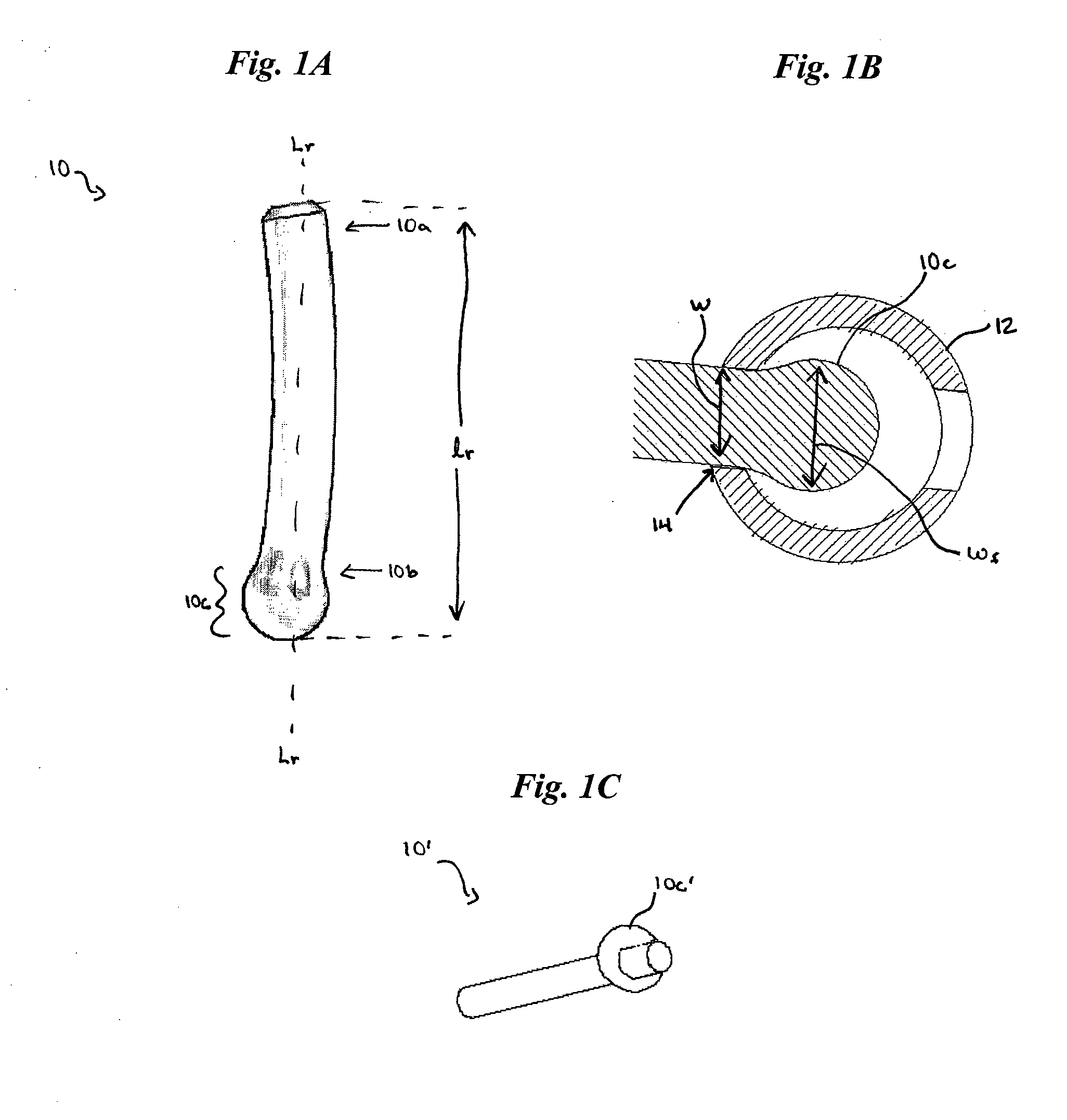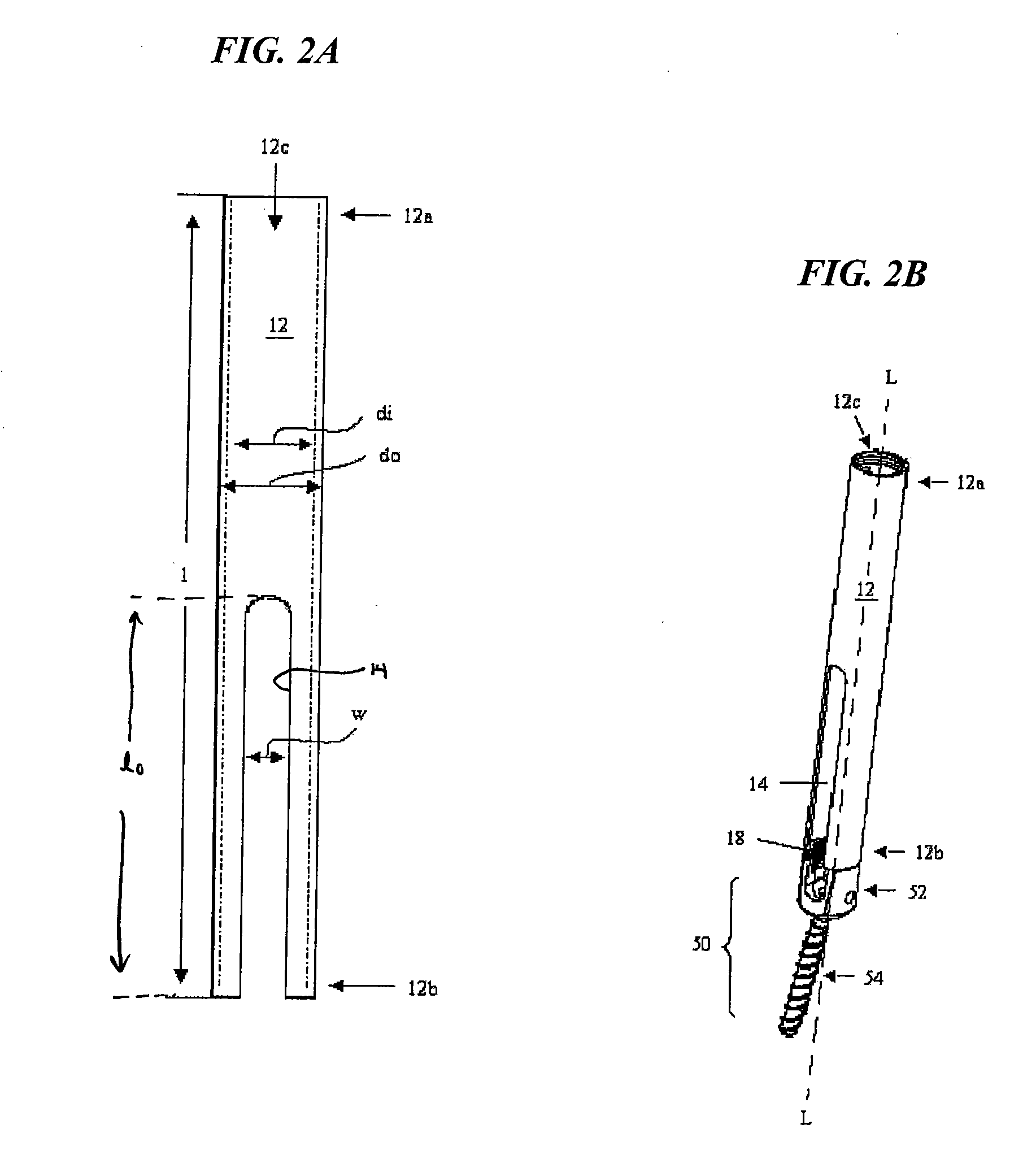Spinal fixation element and methods
a technology for spinal fixation and elements, applied in the field of spinal fixation elements, tools and methods, can solve the problems of undefeated lengthening of surgical procedures, significant damage to surrounding tissue and muscle, and difficulty in elongating spinal fixation elements using minimally invasive techniques
- Summary
- Abstract
- Description
- Claims
- Application Information
AI Technical Summary
Benefits of technology
Problems solved by technology
Method used
Image
Examples
Embodiment Construction
[0026] The present invention provides a spinal fixation element, such as a spinal rod, having a feature formed thereon that facilitates placement of the spinal fixation element through an access device, thus allowing the spinal fixation element to be positioned in relation to a spinal anchor that is coupled to the access device and that is implanted in a vertebra in a patient's spine. The feature also optionally facilitates placement of the spinal fixation element in relation to one or more spinal anchors implanted in adjacent vertebrae. In particular, the spinal fixation element is adapted for use with an access device that has at least one slot or opening formed therein and having a width that is less than a width of the feature, thus preventing the feature from passing therethrough. The spinal fixation element can therefore be inserted through the access device, and a portion of the fixation element can be passed through the slot or opening in the access device while the feature ...
PUM
 Login to View More
Login to View More Abstract
Description
Claims
Application Information
 Login to View More
Login to View More - R&D
- Intellectual Property
- Life Sciences
- Materials
- Tech Scout
- Unparalleled Data Quality
- Higher Quality Content
- 60% Fewer Hallucinations
Browse by: Latest US Patents, China's latest patents, Technical Efficacy Thesaurus, Application Domain, Technology Topic, Popular Technical Reports.
© 2025 PatSnap. All rights reserved.Legal|Privacy policy|Modern Slavery Act Transparency Statement|Sitemap|About US| Contact US: help@patsnap.com



